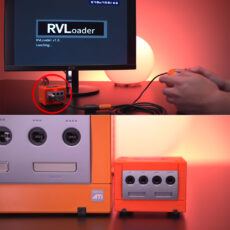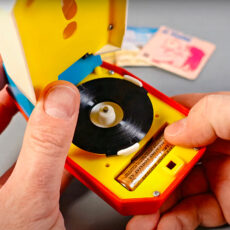
Loughborough University’s physicists have pulled off something wild: a violin so small it could sit on a human hair without breaking a sweat. Clocking in at just 35 microns long and 13 microns wide, this platinum stunner isn’t headed for Carnegie Hall but a microscope slide, showcasing the mind-blowing precision of a new nanolithography system that’s got big ambitions.
Building this miniature masterpiece was no joke. Professor Kelly Morrison’s team leaned on a high-tech tool called the NanoFrazor, tucked inside a sealed glovebox to keep dust and humidity at bay. They kicked things off with a small chip, slathered it with two layers of a gel-like resist, and let the NanoFrazor’s heated tip carve a violin-shaped pattern with surgical accuracy. “Though creating the world’s smallest violin may seem like fun and games, a lot of what we’ve learned in the process has actually laid the groundwork for the research we’re now undertaking,” Morrison said, nodding to the serious science behind the quirky project. After etching, they dissolved the bottom layer to form a cavity, laid down a thin platinum coating, and washed away the extra gunk with acetone, unveiling the shiny violin. The whole thing took about three hours, but months of trial and error went into nailing the process.
- Functional Design - Large LEGO set for adults features the first-ever, 'playable' Grand Piano model with 14 songs accessible via the LEGO Powered Up...
- Powered Up - This is the first Ideas set equipped with Powered Up components; a hub, a motor, and a WeDo 2.0 Motion Sensor, a perfect creative DIY...
- Real Components - This piano has an opening fallboard, 25 separate moving keys each with its own real hammer action, moving pedal and dampers, and...

This hair-sized violin is a show-off for Loughborough’s nanolithography system, built to craft and study structures at the nanoscale—millionths of a meter territory. The NanoFrazor’s like a sculptor’s tool for the atomic realm, chiseling intricate patterns with ease. Morrison, alongside Dr. Naëmi Leo and technician Dr. Arthur Coveney, pushed the system to its limits with this test, proving it’s got the chops for real-world work. “Our nanolithography system allows us to design experiments that probe materials in different ways—using light, magnetism, or electricity—and observe their responses,” Morrison explained, highlighting its Swiss Army knife vibe. Snapped with a Keyence VHX-7000N Digital Microscope, the violin looks comically small next to a human hair, a stark reminder of how far tech’s come.

Why a violin, though? It’s less about tunes and more about showing off a system that could reshape tech. The nanolithography rig is already driving two Loughborough projects: one hunting new ways to store data beyond magnets, and another tapping heat for faster, greener data crunching. These could birth smaller, zippier, eco-friendly devices. “I’m really excited about the level of control and possibilities we have with the set-up,” Morrison said, geeking out over what’s next.
A micron’s one-millionth of a meter, so this 35-micron violin’s tinier than a dust speck. You need a beefy microscope to catch its platinum curves in action, and making it meant working in a sterile glovebox setup to dodge even the tiniest particle sabotage. The months of tweaking scream dedication. “I’m looking forward to seeing what I can achieve—but also what everyone else can do with the system,” Morrison added. Loughborough’s riding a nanotechnology wave, from self-powered wearables to micro-robots for drug delivery, and this system’s opening doors to a future where tiny tech rules.
[Source]













